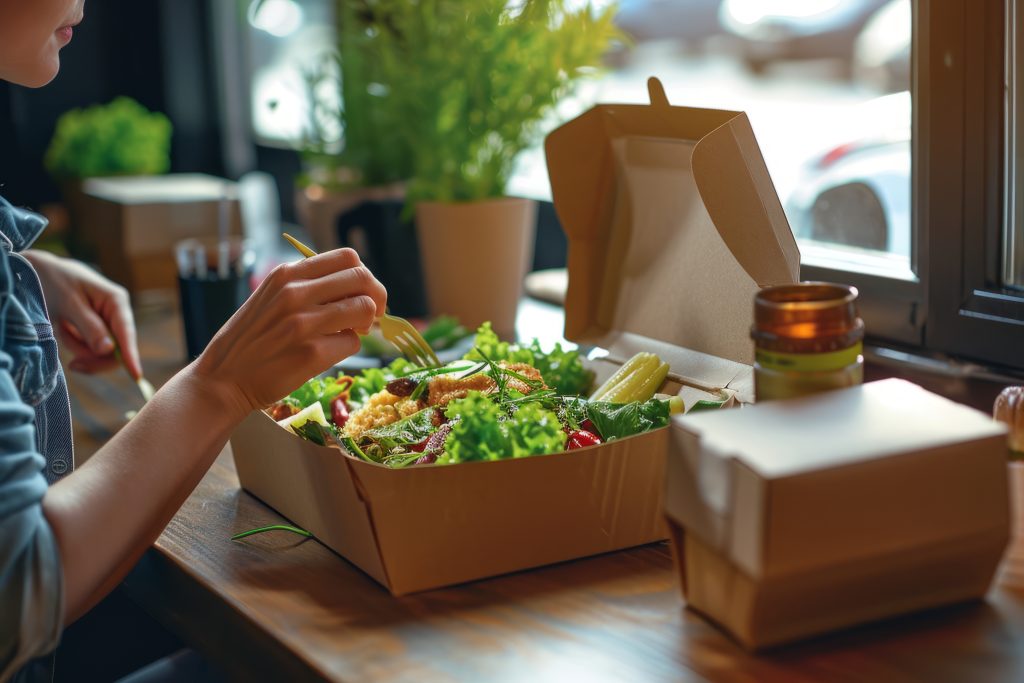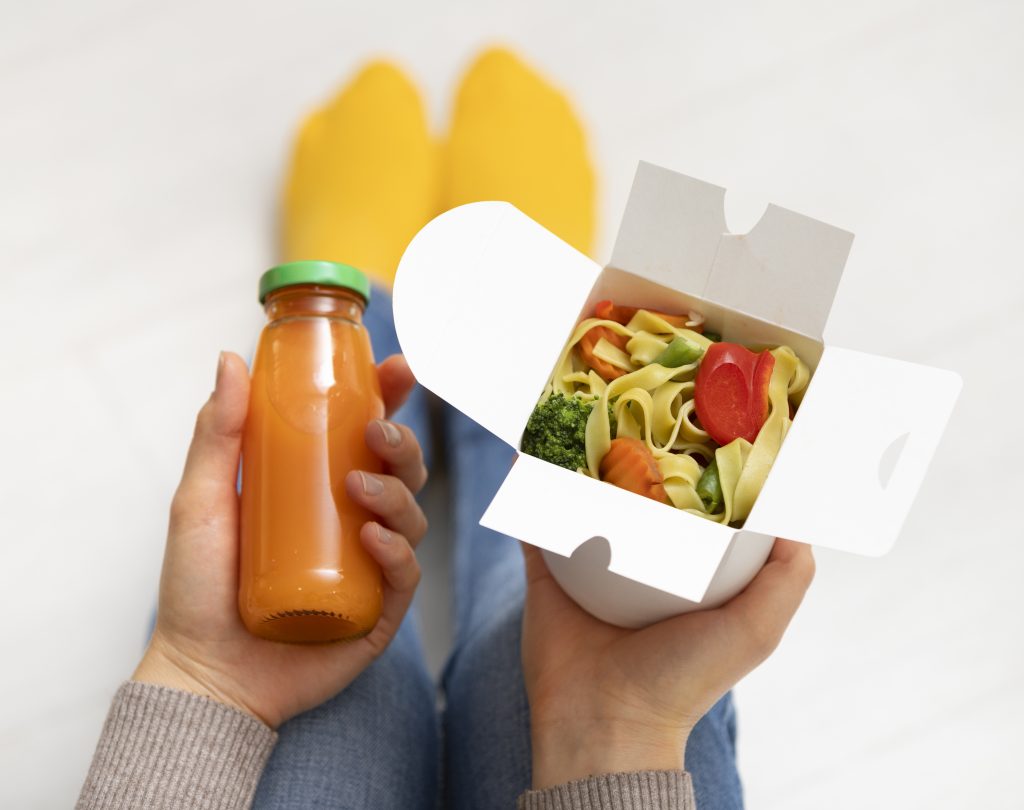Introduction to Food Safety and Packaging
Food safety is a critical aspect of packaging that ensures products are safe for consumption. As regulatory frameworks evolve, understanding new regulations and best practices becomes vital for businesses in the food industry.
Understanding Food Safety Packaging Regulations

Definition and Scope of Regulations
Food safety packaging regulations encompass laws and guidelines governing the materials, processes, and labeling used in food packaging. These regulations aim to prevent contamination and ensure consumer safety.
Key Regulatory Bodies and Their Roles
Regulatory bodies like the FDA in the United States and similar agencies worldwide oversee compliance with food packaging regulations. Their role includes setting standards and conducting inspections to enforce compliance.
Essential Packaging Safety Guidelines

Best Practices for Ensuring Packaging Safety
Adhering to best practices such as maintaining cleanliness, using food-grade materials, and implementing proper sealing techniques minimizes contamination risks.
Compliance with International Standards
International standards like ISO 22000 outline requirements for food safety management systems, ensuring consistency and safety across global supply chains.
Overview of Food Packaging Standards

Common Standards and Certifications
Standards such as BRC Global Standards and SQF Certification set benchmarks for packaging safety, promoting best practices in handling and storage.
Impact on Global Food Supply Chains
Adopting standardized packaging practices enhances traceability and reduces foodborne illness outbreaks, benefiting both consumers and producers.
Latest Developments in New Regulations

Updates and Revisions in Food Packaging Laws
Recent regulatory updates reflect advances in packaging technology and consumer protection, influencing industry practices and product innovation.
Implications for Businesses and Consumers
Businesses must adapt to regulatory changes to maintain market competitiveness and consumer trust in product safety and quality.
Ensuring Compliance with Food Packaging Regulations

Strategies for Meeting Regulatory Requirements
Developing robust compliance strategies involves continuous monitoring, training staff, and partnering with certified suppliers.
Challenges and Solutions in Compliance
Navigating complex regulatory landscapes requires proactive risk management and collaboration with regulatory experts and industry peers.
Importance of Food Packaging Materials Safety

Safe Materials and Substances in Packaging
Using FDA-approved plastics, biodegradable materials, and non-toxic inks ensures packaging safety and environmental sustainability.
Risks Associated with Unsafe Packaging Materials
Materials containing harmful substances like BPA or phthalates pose health risks and may lead to regulatory penalties and consumer backlash.
Read More: The Role of Packaging in Reducing Food Waste
Role of FDA Regulations on Food Packaging

FDA Guidelines and Their Application
FDA regulations cover labeling requirements, direct food contact materials, and packaging integrity testing to safeguard public health.
Specific Requirements for Packaging Safety
Meeting FDA guidelines involves rigorous testing, documentation, and adherence to Good Manufacturing Practices (GMP).
Best Practices for Safe Food Handling and Packaging

Techniques for Minimizing Contamination Risks
Implementing HACCP principles, proper sanitation procedures, and temperature control measures reduces microbial contamination during packaging and distribution.
Training and Education for Food Handlers
Educating employees on food safety protocols enhances compliance and reduces risks associated with mishandling and cross-contamination.
Read More: Aesthetic Trends in Food Packaging Design for 2024
Effective Packaging Hygiene Practices
Hygienic Standards in Packaging Facilities
Maintaining clean facilities, implementing pest control measures, and monitoring hygiene practices ensure safe packaging environments.
Preventing Microbial Contamination
Stringent hygiene protocols and regular audits mitigate risks of microbial contamination, preserving product quality and consumer safety.
Read More: How Personalized Packaging Designs Can Enhance Brand Identity and Customer Loyalty
Conclusion
Adhering to food safety and packaging regulations is crucial for protecting consumer health and maintaining trust in food products. As regulations evolve, businesses must prioritize compliance and adopt best practices to ensure safe and sustainable packaging solutions.
FAQs about Food Safety and Packaging Regulations
Q: What are food safety packaging regulations?
Ans: Food safety packaging regulations are guidelines that ensure packaging materials and processes do not contaminate food, thereby protecting consumer health.
Q: How do packaging safety guidelines ensure consumer protection?
Ans: Packaging safety guidelines establish standards for safe packaging practices, reducing risks of contamination and ensuring product integrity.
Q: What are the latest FDA regulations on food packaging?
Ans: FDA regulations cover various aspects of food packaging, including labeling requirements, materials safety, and packaging hygiene.
Q: Why is compliance with food packaging standards crucial?
Ans: Compliance ensures that packaging meets safety requirements, protects consumer health, and maintains regulatory compliance.
Q: How can businesses improve packaging hygiene practices?
Ans: Businesses can improve hygiene by implementing strict sanitation procedures, staff training, and using hygienic packaging materials.

This article analyzes the clinical features, treatments, and outcomes of ACTD patients with calcinosis cutis in the Mayo Clinic between years 1996 2009 priligy and viagra combination
Your article helped me a lot, is there any more related content? Thanks!
Your article helped me a lot, is there any more related content? Thanks!
Can you be more specific about the content of your article? After reading it, I still have some doubts. Hope you can help me.
Your article helped me a lot, is there any more related content? Thanks!
I’m extremely inspired with your writing abilities and also with the structure in your weblog. Is that this a paid theme or did you customize it yourself? Either way stay up the nice high quality writing, it’s uncommon to look a great weblog like this one today!
Can you be more specific about the content of your article? After reading it, I still have some doubts. Hope you can help me.
покупка аккаунтов магазин аккаунтов
продать аккаунт заработок на аккаунтах
магазин аккаунтов купить аккаунт с прокачкой
профиль с подписчиками магазин аккаунтов
купить аккаунт с прокачкой маркетплейс аккаунтов соцсетей
продажа аккаунтов соцсетей платформа для покупки аккаунтов
продажа аккаунтов соцсетей магазин аккаунтов
Sell Pre-made Account Social media account marketplace
Database of Accounts for Sale Account Selling Platform
Account Acquisition Online Account Store
Buy and Sell Accounts Account Buying Platform
Account Buying Service Website for Buying Accounts
Secure Account Sales Sell accounts
Find Accounts for Sale Account Trading Service
Buy and Sell Accounts Buy Account
Account exchange Account Trading
Account Sale Buy Account
marketplace for ready-made accounts https://bestaccountsstore.com/
account trading account buying service
accounts for sale socialaccountssale.com
find accounts for sale website for selling accounts
account selling platform account market
accounts for sale buy accounts
social media account marketplace guaranteed accounts
account exchange account trading service
ready-made accounts for sale accounts marketplace
buy accounts account market
accounts marketplace buy and sell accounts
account exchange service account acquisition
accounts market ready-made accounts for sale
guaranteed accounts account sale
gaming account marketplace online account store
accounts marketplace buy account
sell account buy accounts
secure account sales account catalog
account purchase account buying platform
account trading platform accounts for sale
account exchange buy pre-made account
Can you be more specific about the content of your article? After reading it, I still have some doubts. Hope you can help me.
account trading account selling service
secure account purchasing platform sell pre-made account
verified accounts for sale ready-made accounts for sale
account market account buying service
sell account account sale
account trading platform sell pre-made account
account purchase https://accounts-offer.org
account buying service https://accounts-marketplace.xyz
buy pre-made account https://buy-best-accounts.org
website for selling accounts accounts market
account buying platform https://accounts-marketplace.live
account market https://social-accounts-marketplace.xyz
accounts marketplace buy accounts
account market https://buy-accounts-shop.pro
account trading platform https://buy-accounts.live/
database of accounts for sale https://accounts-marketplace.online
sell accounts account marketplace
website for buying accounts https://accounts-marketplace-best.pro
биржа аккаунтов https://akkaunty-na-prodazhu.pro/
магазин аккаунтов https://rynok-akkauntov.top/
маркетплейс аккаунтов маркетплейсов аккаунтов
продать аккаунт https://akkaunt-magazin.online/
продать аккаунт https://akkaunty-market.live
маркетплейс аккаунтов соцсетей купить аккаунт
маркетплейс аккаунтов akkaunty-optom.live
купить аккаунт online-akkaunty-magazin.xyz
площадка для продажи аккаунтов https://akkaunty-dlya-prodazhi.pro
биржа аккаунтов https://kupit-akkaunt.online
facebook accounts for sale buy facebook profile
facebook ad account for sale https://buy-ad-accounts.click
buy facebook account for ads buy facebook old accounts
facebook ad accounts for sale buy facebook account for ads
buy account facebook ads https://ad-account-buy.top
facebook accounts for sale https://buy-ads-account.work
buy facebook account for ads https://ad-account-for-sale.top
buy facebook profile https://buy-ad-account.click
facebook accounts for sale buying facebook accounts
sell google ads account https://buy-ads-account.top
buy aged google ads accounts buy google ad account
buy a facebook account https://buy-accounts.click
buy google ads agency account https://ads-account-for-sale.top
buy google ads threshold accounts https://ads-account-buy.work
buy aged google ads accounts buy google adwords account
buy google ad threshold account https://buy-account-ads.work
google ads account for sale buy-ads-agency-account.top
buy google adwords account https://sell-ads-account.click/
buy google ads threshold accounts https://ads-agency-account-buy.click/
buy verified business manager https://buy-business-manager.org
google ads accounts https://buy-verified-ads-account.work
facebook bm account facebook business account for sale
facebook bm account buy buy-verified-business-manager-account.org
facebook bm account buy buy-verified-business-manager.org
buy business manager facebook buy verified bm facebook
facebook business manager for sale business-manager-for-sale.org
buy business manager facebook buy-business-manager-verified.org
buy facebook verified business manager https://buy-bm.org
buy verified bm facebook buy facebook business manager accounts
verified bm https://buy-business-manager-accounts.org
buy tiktok ads account https://buy-tiktok-ads-account.org
tiktok ads agency account https://tiktok-ads-account-buy.org
tiktok ad accounts https://tiktok-ads-account-for-sale.org
tiktok ads account for sale https://tiktok-agency-account-for-sale.org
tiktok ads agency account https://buy-tiktok-ad-account.org
buy tiktok ads account https://buy-tiktok-ads-accounts.org
buy tiktok business account https://tiktok-ads-agency-account.org
buy tiktok ads tiktok ad accounts
tiktok ads agency account https://buy-tiktok-ads.org
how can i get generic clomiphene tablets clomid price cvs clomiphene price in usa order generic clomid without rxРіРѕРІРѕСЂРёС‚: where to buy cheap clomiphene price clomiphene sleep apnea good rx clomiphene
Proof blog you have here.. It’s intricate to assign elevated worth writing like yours these days. I justifiably respect individuals like you! Withstand care!!
This is the big-hearted of criticism I positively appreciate.
azithromycin 500mg cost – ciprofloxacin 500 mg without prescription buy flagyl generic
buy semaglutide 14mg online – cost rybelsus 14 mg periactin for sale online
Thanks for sharing. I read many of your blog posts, cool, your blog is very good.
buy domperidone pills for sale – buy flexeril cheap flexeril brand
cost inderal 20mg – order inderal 20mg generic order methotrexate 2.5mg pills
buy generic amoxil over the counter – how to buy ipratropium buy ipratropium 100 mcg online cheap
zithromax usa – brand bystolic 20mg bystolic where to buy
buy clavulanate cheap – atbioinfo.com buy acillin medication
I don’t think the title of your article matches the content lol. Just kidding, mainly because I had some doubts after reading the article.
order esomeprazole 40mg pills – anexa mate esomeprazole generic
I don’t think the title of your article matches the content lol. Just kidding, mainly because I had some doubts after reading the article.
buy warfarin generic – anticoagulant hyzaar tablet
mobic online buy – relieve pain mobic 15mg pills
oral prednisone 5mg – https://apreplson.com/ prednisone 10mg uk
free ed pills – https://fastedtotake.com/ buy ed pills us
amoxil us – https://combamoxi.com/ amoxil pills